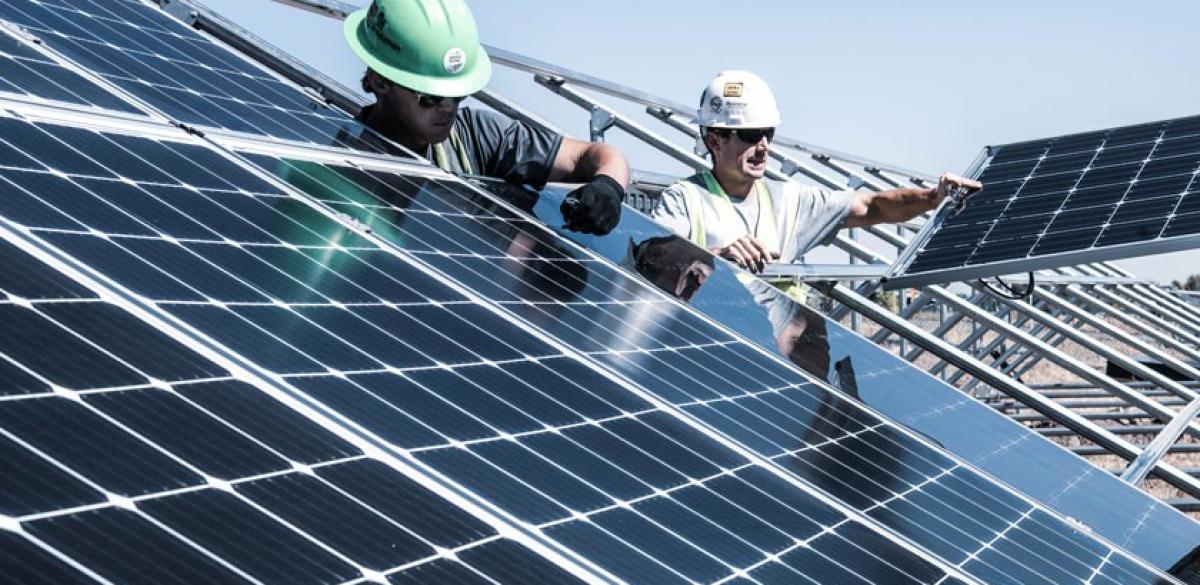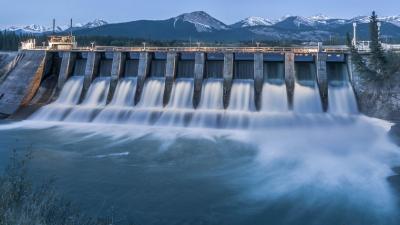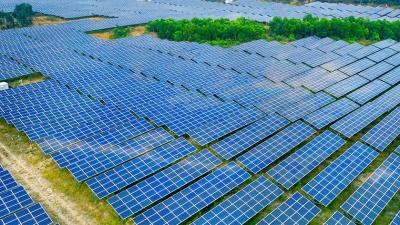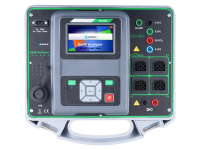Fall of potential method for solar and wind stations
Renewable energy sources

Measuring earthing resistances is a demanding and responsible job. Earthing and consequently the distribution of potential funnels is the most important form of protection for living beings in the vicinity of energy sources.
Methods require special equipment and lots of repetition, particularly on large systems with multiple earthing points. The 3-wire or 4-wire method, also called fall-of-potential method, is a common way of measurement and the first recommendation by standard IEEE 80. It is particularly useful for remote installations with reasonably small diagonal size. Both solar and wind stations qualify in this aspect. The three measurement points are the measured earth electrode, one electrode for current generated into reference ground, and the last one for measuring the voltage potential.
Measurements
Metrel earth analysers, testers, generators and meters for step voltage measurement systems use the notation S for sensing voltage of measurement electrode and H for current or injecting one. Measurement principle is very simple. The H electrode injects current into the earth, and voltage between S and the electrode under test (denoted E) is taken. Resistance is calculated using Ohm’s law.

The PE (or PEN) wire in TN system should not be disconnected from the electrode being tested. The first time the local earthing is measured is already before it gets connected. After the connection of the PE/PEN and any other conductors, another measurement is performed, and the results compared to the non-connected one. Split factor is calculated from the two and used for any later maintenance or periodic inspections.
Every electrode causes an area (or effective radius) of distributed resistance in the earth. To achieve accurate measurement, the electrodes must be so far from each other that the areas of effective resistance do not overlap. If the electrode S is too close to E, the result will be too low, as only part of the measurement funnel will be covered. If the electrodes S and H are too close together, the H electrode funnel will impact the result. Other important source of inaccuracy is presence of conductive materials underground like pipes or fences. One must keep in mind that ground system of nearby object can overlap. In that case, measurement with this method will not work.
The distances depend on the size of the longest diagonal or diameter of the protected area. Distance from E to H should be at least 5 times longer than its greatest dimension. The electrode S is placed at 62% of this distance. There are some variants of the method with a different electrode positioning. If there is particularly large space available, the 5 times distance can be pushed even further out and the S electrode put at halfway. This allows measurement without a measuring tape. The electrodes can also be placed as vertices of the equidistant triangle.
Result at any electrode position should be checked by repetition at slightly altered distances. S electrode is moved about 10% closer to E, and then further away from the original position. Standard IEC 60364 -6 advises moving it by 6m each time. The reading should not change more than 10%. Otherwise, the probes should be moved further away from the measured electrode. If there are suspect objects underground, perhaps moving them to a different position would help. It is good practice to repeat the measurement with different electrode positioning. At least they should be put to the other side of the measured object, at 180 degrees from the initial measurement.
Wind and solar power stations are an example where fall of potential method can be very successful. They tend to be isolated, at a distance from other installations. Wind towers are only connected to each other in the substation and can be isolated, so earthing system of each can be measured. Solar systems often rely on very few earthing connections (one for metal frames and one for lightning protection for example) and an extensive equipotential bonding network.
Metrel recommends one of two earth analysis instruments for this method: MI 3290 Earth Analyser or MI 3295 Step/Contact system. Their standard sets contain long leads and very long optional extensions are available. Fall of potential method is available in the firmware, making it easy to use, and allowing the results to be saved for later consideration.
Measurement of the potential curve of the whole funnel spread are used to estimate danger to life in the vicinity of the location, its earth resistance, and to evaluate its split factor. The fall of potential method is used on all critical points, which are all conductive parts that can bring dangerous potential close to the ground: fences, metal doors, metal covers, metal construction, rails etc. MI 3290 Earth Analyser combined with MI 3295M or MI 3295 Step/Contact system support this type of measurement. Even 100 mA generated current at 55 Hz would be sufficient to measure fall of potential successfully and accurately with robust noise immunity.
















